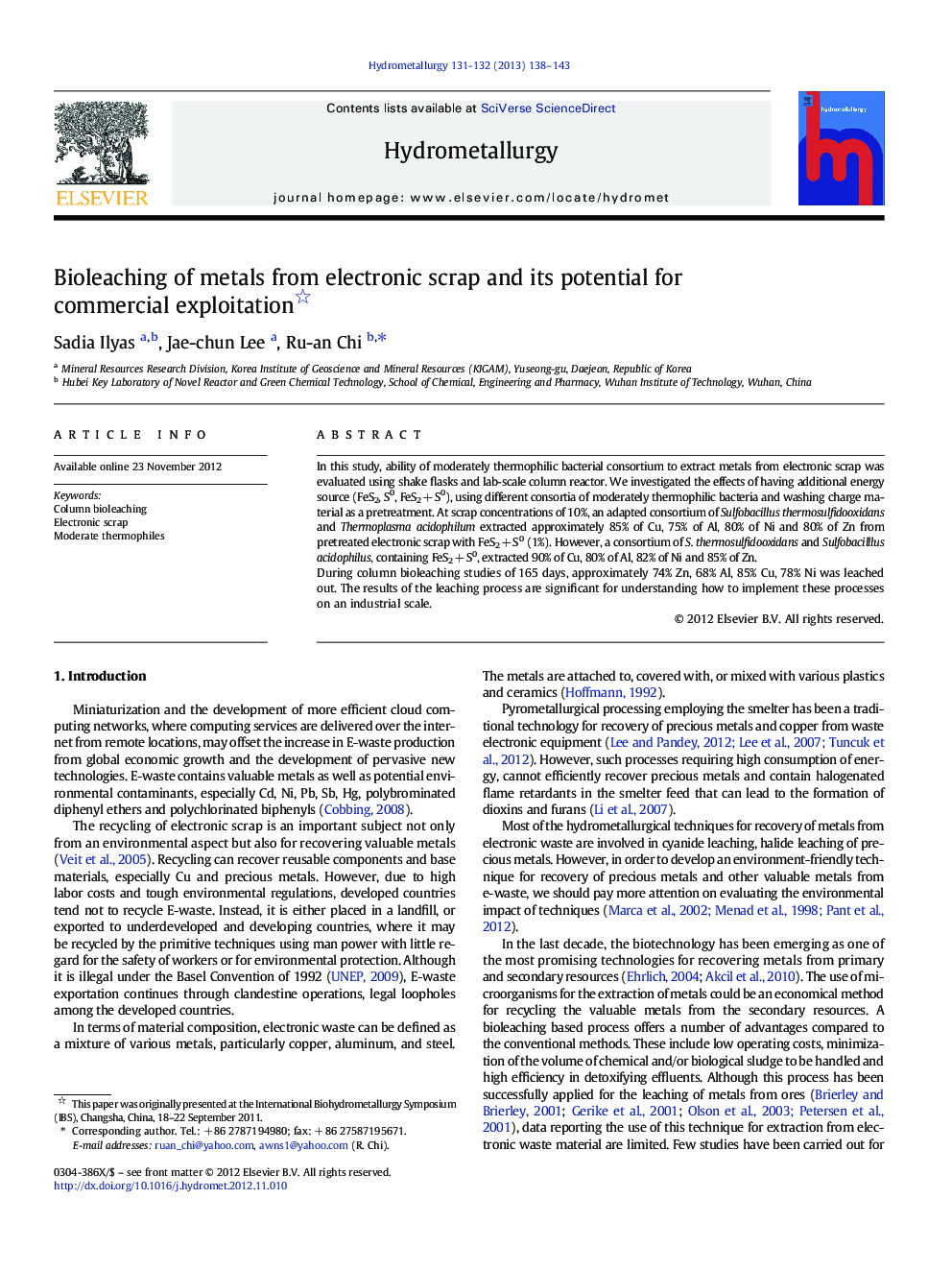| Article ID | Journal | Published Year | Pages | File Type |
|---|---|---|---|---|
| 212451 | Hydrometallurgy | 2013 | 6 Pages |
In this study, ability of moderately thermophilic bacterial consortium to extract metals from electronic scrap was evaluated using shake flasks and lab-scale column reactor. We investigated the effects of having additional energy source (FeS2, S0, FeS2 + S0), using different consortia of moderately thermophilic bacteria and washing charge material as a pretreatment. At scrap concentrations of 10%, an adapted consortium of Sulfobacillus thermosulfidooxidans and Thermoplasma acidophilum extracted approximately 85% of Cu, 75% of Al, 80% of Ni and 80% of Zn from pretreated electronic scrap with FeS2 + S0 (1%). However, a consortium of S. thermosulfidooxidans and Sulfobacilllus acidophilus, containing FeS2 + S0, extracted 90% of Cu, 80% of Al, 82% of Ni and 85% of Zn.During column bioleaching studies of 165 days, approximately 74% Zn, 68% Al, 85% Cu, 78% Ni was leached out. The results of the leaching process are significant for understanding how to implement these processes on an industrial scale.
► Consortium of autotrophs has greater bioleachability than autotroph + heterotroph. ► Bioleaching efficiency can be improved by additional energy source. ► Compensation of acid demand contributes significantly for maximum metal extraction. ► Current work provides theoretical basis for designing practical bioleaching system.
